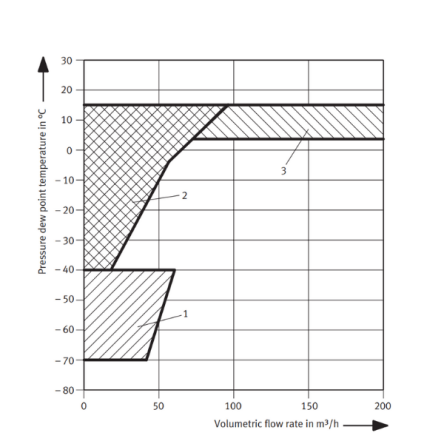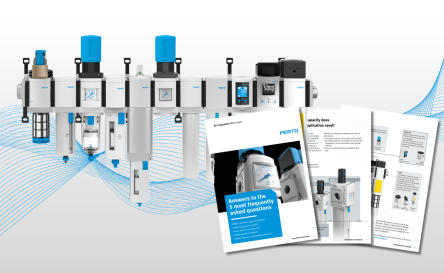What is a membrane air dryer
A membrane air dryer is a device designed to extract moisture from compressed air using selectively permeable membranes. Unlike traditional dryers that rely on refrigerants or desiccants, membrane dryers use bundles of hollow fibres. As compressed air passes through these fibres, water vapour diffuses through the fibre walls, leaving behind dry air suitable for sensitive applications.
How do membrane air dryers work
The drying process in membrane air dryers is driven by diffusion, which occurs due to a partial pressure gradient. Here’s how the process unfolds:

1. Moist air enters the bundle of hollow fibres
2. Water vapour diffuses through the fibre walls, moving from inside the fibres to the outside because of concentration differences.
3. Moisture is removed—it is vented as vapour along with a portion of the dry air (purge air) to the atmosphere.
4. Dry air exits from inside the fibres, now with significantly reduced moisture content.
This permeation process lowers the pressure dew point of the compressed air, making it ideal for use with sensitive equipment and processes.
Want to learn more about compressed air preparation?
📘 Download our whitepaper: Answers to the 5 most frequently asked questions about air prep
Key process characteristics
Membrane air dryers offer several important design features and operational benefits:
- Pre-filtering required: For optimal performance, compressed air should be pre-filtered to less than 0.01 μm.
- Minimal pressure drop: The design ensures only a minimal pressure drop across the dryer.
- Maintenance-free operation: With no moving parts and no need for regular servicing, membrane dryers are well-suited for continuous use.
- Low energy consumption: The process is highly energy-efficient, making it ideal for modern automation systems.
- Compact design: Membrane dryers save valuable space in industrial setups due to their small footprint.
- No condensate trap needed: Unlike other drying technologies, membrane dryers disperse condensate into the atmosphere along with the drying air stream, eliminating the need for a condensate trap.
Performance factors for membrane air dryers
Several factors affect the performance of membrane dryers:
Inlet air quality
Pre-filtration is essential to prevent membrane contamination and ensure optimal performance.
Operating temperature
Membrane efficiency can be affected by temperature extremes.
Purge air rate
The amount of purge air used affects both drying efficiency and overall system efficiency. Note that a portion of the dry air is consumed as purge air.
Membrane condition
While generally maintenance-free, membrane condition should be monitored over time.
Choosing the right drying technology
Selecting the optimal compressed air drying solution requires careful consideration of your specific requirements and the strengths of each technology.
When to choose a membrane air dryer
Membrane dryers are an excellent choice when:
- Compact installation space is required: Their small footprint makes them ideal for point-of-use applications.
- Maintenance-free operation is desired: With no moving parts, they require minimal attention.
- Moderate dew points are acceptable: They typically achieve pressure dew points suitable for most general applications.
- Energy efficiency is a priority: Their low energy consumption supports sustainability goals.
Limitations to consider: Membrane dryers are best for moderate flow rates and dew points; very high flow rates or extremely low dew points may require adsorption dryers. Effective pre-filtration is needed to protect the membrane from contamination. Additionally, a small amount of dry air is used as purge air (ranging from 10% to 20% of the total airflow), which slightly reduces system efficiency and should be accounted for in the design.
Typical applications
Common applications include:
- Laboratory instruments: Ensuring precise measurements and protecting sensitive analytical equipment from moisture-related errors.
- Medical air supplies: Providing dry air for respiratory devices, dental tools, and other medical equipment where moisture can affect performance or safety.
- Painting and coating systems: Preventing moisture from causing defects such as blisters, poor adhesion, or uneven finishes in paint and coating processes.
- Pneumatic controls: Maintaining reliable operation of valves, actuators, and control systems by preventing moisture-induced corrosion or sticking.
- Analytical equipment: Protecting gas chromatographs, spectrometers, and other analytical devices from moisture contamination.
- Point-of-use installations in manufacturing: Supplying dry air directly to workstations or equipment in production lines, especially where space is at a premium.

Comparing drying technologies
When evaluating compressed air drying solutions, consider how each technology addresses your needs:
2. Membrane dryers: Compact and maintenance-free, typically achieving moderate dew points. Ideal for point-of-use applications and installations where space is limited.
1. Adsorption dryers: Capable of achieving the lowest possible dew points (down to −70°C), but require regular maintenance and replacement of the drying agent. Best for applications demanding extremely dry air.
3. Refrigeration dryers: Suitable for systems up to 1000 m3/h, providing moderate dryness. Appropriate for general industrial use where extremely low dew points are not required.
- Areas of application for types of dryer (Source: Hoerbiger-Origa)
The choice between these technologies ultimately depends on your required dryness levels, flow rates, maintenance capabilities, and operational factors. By matching these considerations to the strengths of each technology, you can ensure optimal performance and efficiency in your compressed air system.
Frequently Asked Questions (FAQ)
What maintenance is required for membrane air dryers?
Membrane air dryers are generally maintenance-free; however, regular replacement or cleaning of the pre-filters is essential to prevent clogging and maintain optimal performance.
What is the typical lifespan of a membrane air dryer?
With proper pre-filtration and installation, membrane air dryers can operate reliably for several years. Lifespan may vary depending on air quality and operating conditions.
How do I select the right membrane air dryer for my application?
Consider factors such as required dew point, flow rate, air quality, available space, and installation environment. Consult manufacturer specifications for guidance.

Want to learn more about compressed air preparation?
📘 Download our whitepaper: “Answers to the 5 most frequently asked questions about air prep”
Download now